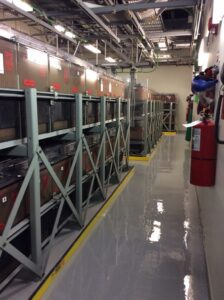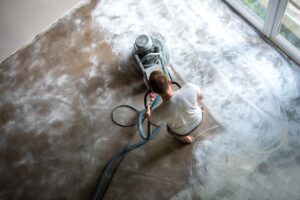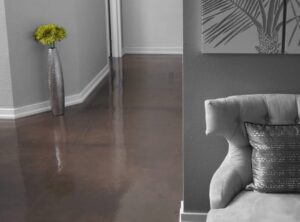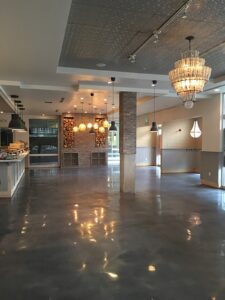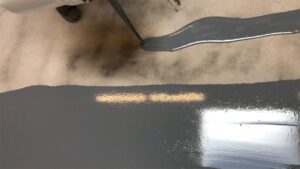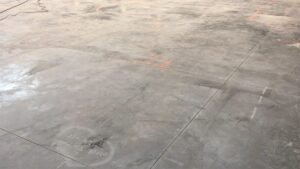BLOG
Colorado Concrete Repair is dedicated to promoting sustainable building practices in the commercial sector by highlighting the environmental benefits of concrete flooring. As a leading provider of concrete flooring solutions in the Denver area, we understand the importance of eco-friendly choices in today’s construction and renovation projects. Our commitment to sustainability is reflected in our approach to commercial flooring, where we advocate for concrete due to its durability, low environmental impact, and energy efficiency. For businesses looking to make environmentally responsible decisions regarding their flooring, Colorado Concrete Repair offers expert advice, installation services, and maintenance solutions. We are here to guide you through the advantages of choosing concrete for your commercial flooring needs. Sustainability of Concrete Flooring Concrete flooring stands out as a sustainable option for commercial spaces due to several key environmental benefits: Longevity and Durability – Concrete floors are renowned for their exceptional lifespan and resistance to wear and tear, reducing the need for frequent replacements and minimizing waste. Energy Efficiency – The thermal mass properties of concrete contribute to improved energy efficiency in buildings. Concrete floors can […]
...READ MOREWhen considering flooring options for multi-story buildings, concrete flooring often comes up as a durable and stylish choice. However, a common question is whether concrete flooring can be practically and safely installed on upper levels, such as the second, third, or fourth floors. The answer is “yes,” but there are specific and important details to consider. The Viability of Concrete Flooring in Multi-Story Buildings Concrete, known for its strength and longevity, is a versatile material increasingly used in various types of construction, including upper-story installations. It is becoming so popular that many properties are switching from other materials, such as tile and laminate, to concrete that has been styled and decorated to look like other forms of flooring. Concrete flooring can be used on the upper floors of commercial properties very successfully. However, its ability to be installed on higher floors hinges on several factors: Structural Integrity – The building’s structure must be able to support the weight of concrete, which is heavier than other flooring materials. An assessment by a structural engineer is crucial to determine if the building […]
...READ MOREConcrete flooring has long been lauded for its durability and practicality, especially in high-traffic and industrial settings. However, what’s less commonly known is that concrete doesn’t have to be drab or uninteresting. With the advances in concrete coloring techniques, you can now add a splash of color to your concrete floors, offering both aesthetic and functional benefits. Types of Concrete Coloration Methods Most of the time, we keep concrete its natural grey tone. It is more cost effective and requires less maintenance that way. But there are ways to add coloring to the mix, through processes such as: Integral Coloring Integral coloring involves adding pigments to the concrete mix before it is poured. This method offers the advantage of uniform color throughout the depth of the concrete, making it less susceptible to fading or surface damage. Dry-Shake Color Hardener A dry-shake color hardener is a powdered substance that is applied to the surface of freshly poured concrete. This not only colors the surface but also strengthens it, making it more resistant to abrasion. Acid Staining Acid staining is a chemical […]
...READ MOREThe Best Concrete Flooring, Epoxy Flooring, and Maintenance Services for Commercial Properties in Parker, Colorado Commercial properties in Parker, CO rely on very specific types of flooring – flooring that needs to keep up with the frequent wear and tear that comes with ongoing use. Auto garages need to be able to withstand the weight of the vehicles and the oil spills. Warehouses need to withstand immense pressure from inventory, forklifts, trucks, and more. Every business needs flooring that is built for their specific – and often extensive – use. Laminate and wood are not going to cut it. What your property most often needs is concrete flooring, epoxy coatings, polished concrete, and flooring that is capable of lasting for decades at a time. At Colorado Concrete Repair, we provide commercial flooring in Parker, CO and the surrounding region. Based in Denver, we have provided the floors that you see in commercial properties throughout the entire region, and would love an opportunity to provide you with an estimate. Use our Request a Quote form to get started. Our Commercial Flooring […]
...READ MOREAlthough designed last for decades, a concrete floor will eventually start to show wear. Since this could impact the productivity, safety, and appearance of your facility, it becomes necessary to repair or replace a floor that is showing signs of wear. Rather than laying an entirely new floor, some property owners wonder about the possibility of pouring a new layer over the existing floor. This can sometimes be a cost effective way to restore the look and functionality of a concrete floor, but you will need to know whether or not this will work for your facility and if it will provide the most effective option. When Is It Possible to Pour New Concrete Over Existing Concrete? When installed correctly concrete is a reliable foundation material and it can serve as a foundation for a floor as well. This is true as long as it is in the right condition. When considering this kind of repair, the following must be true about your existing concrete floor and the installation process. In order for a new concrete floor to be laid […]
...READ MORECuring is the process by which concrete hardens, transitioning from a liquid state to the hard and durable surface that will make up your floor. Although this is often called drying, this is somewhat of a misnomer. While there is some drying occurring in the sense that moisture is evaporating, the process by which a cement mixture hardens into concrete is a chemical price reaction. Understanding how curing happens in concrete will give you a better idea of what to expect if you are installing a concrete floor at your property. The curing process will enable concrete to reach its full strength and determine when you can begin using your new floors. Concrete Curing Process and Timeline There are a few different types of curing methods used with concrete, such as water curing or membrane curing. Regardless of which curing method your installer is using, a similar chemical reaction is happening within the concrete as it cures. The concrete mixture consists of water and Portland cement, as well as other additives. The water and cement interact, a process known as […]
...READ MORE
